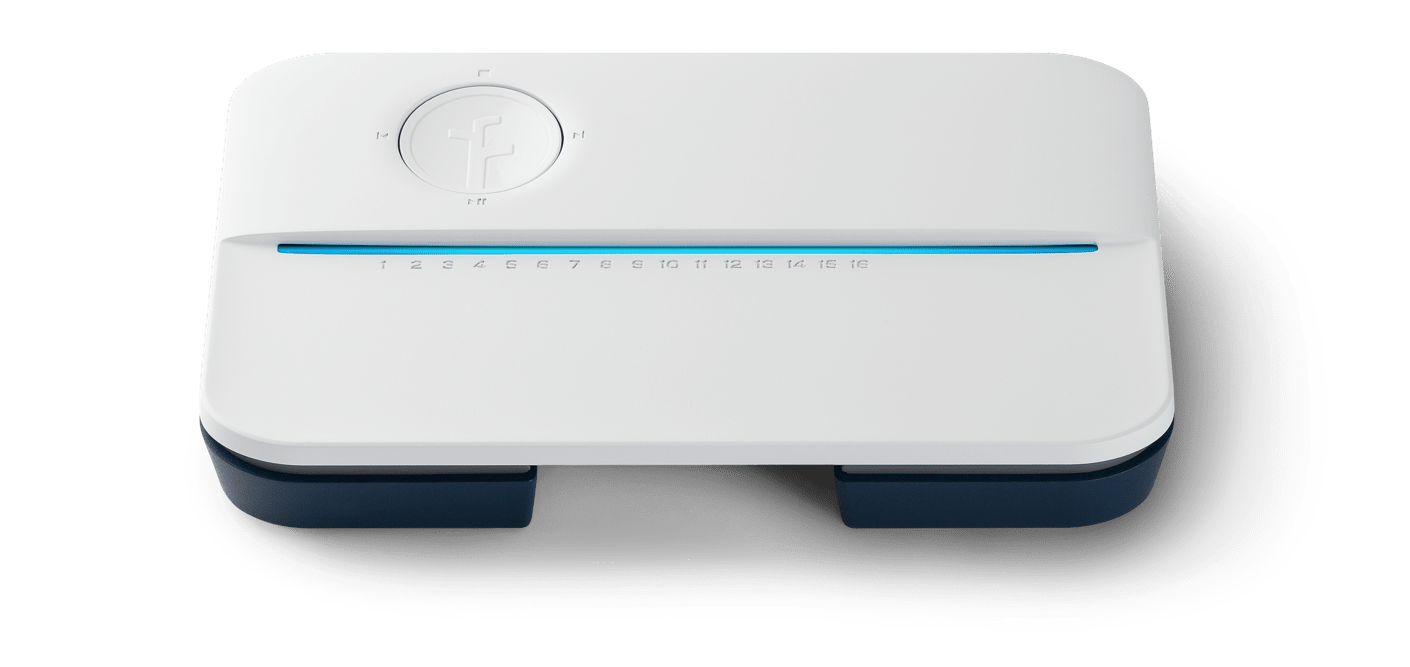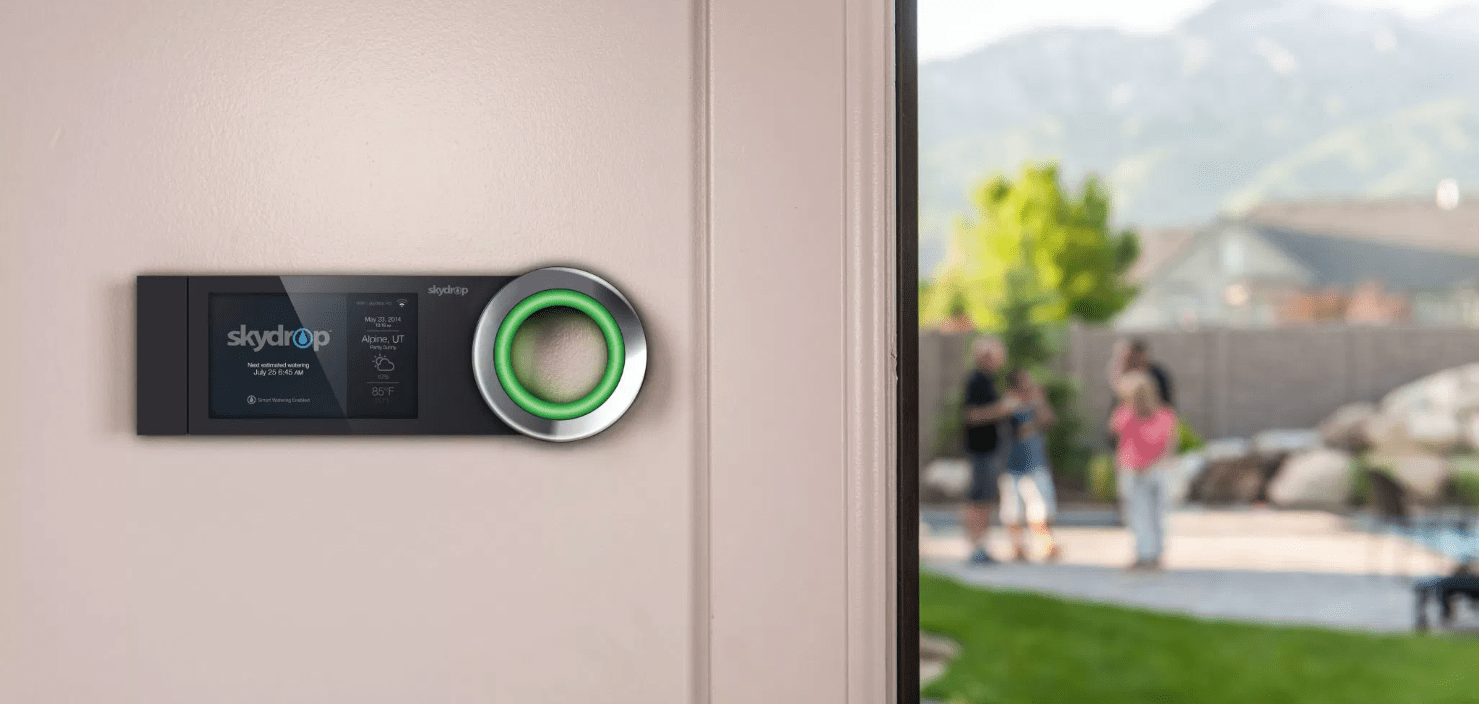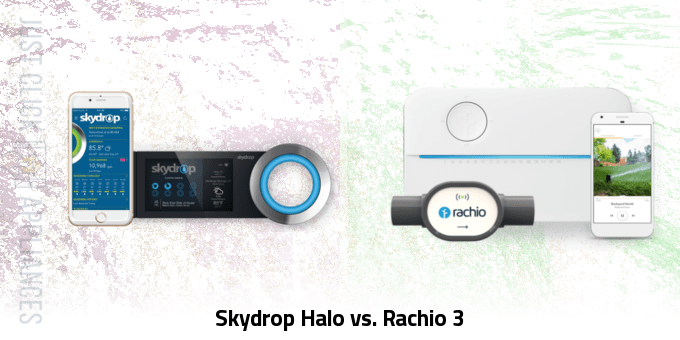While most people think of lighting or thermostats when it comes to a connected home, there is a growing industry of smart sprinkler control systems that are better for the environment — and better for your wallet.
Below we dive deep into the details and compare the Skydrop Halo vs. Rachio 3. Both systems are excellent in their own right, but which is better for your home?
Skydrop Halo vs. Rachio 3 — About
When it comes to smart sprinkler control systems, both Skydrip and Rachio are highly-respected names with a significant presence in the smart technology scene.
Rachio has been around for quite some time, and has three different generations of smart sprinklers — all of which have varying features and perks that should suit the needs and budget of most any homeowner. Rachio is particularly good when it comes to smart home integration and sensors, giving you ample backup to its built in weather detection system and adding extra convenience to your connected home.
While Rachio might have been around for a while, that doesn’t mean that Skydrop isn’t a formidable force on the smart sprinkler scene. The pricing is pretty accessible for their lower tier models, and the product family as a whole offers much of the same features that you see with Rachio. Hyper-local weather targeting helps ensure that you’re only watering your lawn when it needs it, and the weather features are quite extensive — covering precipitation, temperature, humidity, wind, solar radiation and more.
Both product lines are fully-featured and worthy competitors, so regardless of your choice, you’ll enjoy a smart system that takes the guesswork out of keeping your lawn green.
Skydrop Halo vs. Rachio 3 — Things in Common

While we’ll dive deep into the differences between the Skydrop Halo and Rachio 3 below, let’s first start of with the features that these two smart sprinkler control systems have in common.
Regardless of your choice in brand, you’ll enjoy options for either 8 zone or 16 zone control — giving homeowners options for pretty much any lawn, from a small patch of grass to a gigantic back yard.
While you’ll primary control your system through the smartphone app in most cases, both the Skydrop Halo and Rachio 3 offer options for on-unit manual control — making it easy to adjust settings on a whim even if you don’t have your phone handy.
Cloud Sync functionality ensures that your device will always be up to date and functioning based off of your preset schedules, and weather intelligence comes standard on both systems for dynamic control over your watering based on current environmental conditions.
Controlling your sprinklers is easier than ever before with support for Amazon Alexa and Google Assistant, and Wink, Nest, and IFTTT support covers most of the major smart home controllers. It should be easy to integrate your smart sprinklers with the rest of your connected home — especially with the extensive control provided by the conditional triggers from IFTTT.
In terms of durability and manufacturer support, both sprinkler systems support outdoor enclosures and are backed by a two year warranty, giving you the peace of mind that your investment will be protected for the first couple years of its life.
Skydrop Halo vs. Rachio 3 — Differences
-
Difference #1: Zone Control – We discussed the fact that both smart sprinkler systems offer 8 and 16 zone control in the similarities section, but the two products do differ in how exactly this zone control is implemented.
One of the primary advantages that the Skydrop Halo has over the Rachio is that it comes as an 8-zone model by default, but can be expanded to 16 zones with a Skydrop Expansion. This allows you to start with a small system and then grow it to suit your needs.
Rachio, on the other hand, forces you to choose between 8 and 16 zones right upfront. This may not be a problem for those who know exactly what they want going into the purchase, but the benefits of the flexibility that the Skydrop Halo offers cannot be overstated.
-
Difference #2: Sensors – When it comes to optional sensors that expand the functions of these smart sprinkler systems, it’s very clear that Rachio has the edge.
The Rachio Gen 3 offers wide support for third party rain sensors like Hunter Rain-Clik Wireless Rain Sensor, RAIN BIRD WR2 Wireless Rain Sensor, and the Orbit Wireless Rain Sensor. These sensors help avoid overwatering or water wastage, and the Rachio Wireless Flow meter — exclusive to the Rachio 3 — is great and monitoring water usage and stopping leaks in their tracks.
The Rachio Gen 3 also uses advance weather monitoring systems with hyper-local accuracy to ensure that you’re only watering your lawn when you need it, but the support for these sensors acts as an excellent backup should these systems fail.
Skydrop weather monitoring, as mentioned above, is pretty comprehensive with support for precipitation, temperature, humidity, wind, and even solar radiation monitoring, but it doesn’t have nearly the same amount of support for sensors. Not having that backup might not make a difference in day to day use, but should the connection to weather information be interrupted, your smart sprinklers will be a whole lot less intelligent.
-
Difference #3: Wi-Fi Connection – Both the Rachio Gen 3 and Skydrop Halo support 2.4GHz 802.11 b/g/n connections, but the Rachio has the advantage with additional support for 5GHz frequencies. If you use a 5GHz router or think that you may move to that frequency in the future, the Rachio Gen 3 is the clear choice.
-
Difference #4: Smart Home Integration – As mentioned above, there is a wide amount of support for smart home integration with either device, but the Rachio makes it a little bit easier.
First off, the Skydrop Halo doesn’t support SmartThings in any capacity, which definitely puts it at a disadvantage for homeowners who use that control system to connect devices.
Additionally, Wink support is not available by default — you’ll have to integrate your products in a roundabout way through IFTTT. Once you get things set up this is not much of a disadvantage, but it definitely takes more effort to get things up and running when compared to the Rachio Gen 3 which integrates extremely well right out of the box.
Long story short, if smart home integration is your primary concern, the Rachio Gen 3 comes out on top. The Skydrop Halo does offer an extensive amount of support, but it admittedly pales in comparison to its competitor.
-
Difference #5: Dimensions – While either device is small enough to fit in most anywhere, there are some differences in product dimensions that are worth mentioning to help give you a sense of the profile of both models.
The Rachio has dimensions of 9.1” x 5.5” x 1.4”, while the Skydrop Halo measures 11″ x 4.875″ x 4″. This isn’t a significant difference, but the Skydrop is a good amount larger and that may make a difference in extremely cramped spaces. It’s also much heavier at 2.8 lbs vs. the 1.05 of the Rachio.
Skydrop Halo vs. Rachio 3 — Comparison Chart
| Skydrop Halo | Rachio 3 | |
|---|---|---|
| 8-zone model | Yes | Yes |
| 12-zone model | No | No |
| 16-zone model | via Skydrop Expansion | Yes |
| Rain Sensor | No | Supported |
| Soil Sensor | No | Supported |
| Wired Flow Sensors | No | Supported |
| Wireless Rachio Flow Meter | No | Supported |
| Manual Control | On-unit | On-unit |
| Cloud Sync | Yes | Yes |
| Local Connect | No | No |
| Weather Intelligence | Yes | Advanced |
| Amazon Alexa | Yes | Yes |
| Google Assistant | Yes | Yes |
| SmartThings | No | Yes |
| Wink | via IFTTT | Yes |
| Nest | Yes | Yes |
| IFTTT | Yes | Yes |
| App | iOS and Android | iOS 10.3+ and Android 4.4+ |
| Wi-Fi Connection | 2.4GHz 802.11 b/g/n | 2.4 or 5 GHz 802.11 b/g/n |
| Temperature Range | -4°F to 185°F | -4°F to 140°F |
| Outdoor Enclosure | Available | Available |
| Dimensions | 11″ x 4.9″ x 4″ | 9.1” x 5.5” x 1.4” |
| Weight | 2.8 Lbs. | 1.05 Lbs. |
| Warranty | 2 years | 2 years |
Skydrop Halo vs. Rachio 3 — Accessories

As mentioned above, the Rachio has wider support for sensors, so you may be interested in picking up a Wireless Rain and Freeze Sensor or a Wireless Flow Meter. The Rachio system is fully-features by default, but racking on these sensors can really take it to the next level in terms of reliability and efficiency. You might want to pick up a Weatherproof Outdoor Enclosure as well, so you can install your Rachio system on the exterior of your home.
While the Skydrop doesn’t have quite the same number of accesories, it’s worth reiterating once again the usefulness of the Skydrop Expansion which turns your 8-zone system into a 16-zone setup. Just like the Rachio, a Skydrop Enclosure is the perfect complement to your smart sprinkler controller if you’d like to set it up outside.
Skydrop Halo vs. Rachio 3 — Our Thoughts

It’s clear that these two systems have a lot in common, and there are benefits and drawbacks to each system that make it difficult to declare one as outright superior.
The Skydrop Halo is pretty unique in its ability to expand from an 8-zone system to 16 zones, and the weather monitoring is very comprehensive with support for even niche metrics like solar radiation when it comes to monitoring conditions and adjusting water usage. It falls behind, however, when it comes to smart home integration as well as support for additional sensors. It’s also not quite as flexible when it comes to supported frequencies — only supporting 2.4GHz when compared to the Rachio which also supports 5GHz.
The Rachio succeeds in many ways that the Skydrop Halo falls short, with extensive smart home integration and support for additional sensors that serve as the perfect backup in case of weather service outages. It isn’t as expandable as the Skydrop Halo and forces you to choose between 8 and 16 zones right off the bat, but the bevy of other features more than makes up for this drawback.
At the end of the day, we do feel that the Rachio Gen 3 is the superior product. However, these two models are just two of the many smart sprinkler products that make up the market. If you’re still undecided, consider taking a look at RainMachine in our comparison of Skydrop Halo vs. RainMachine.
Last update on 2024-04-15 at 21:05 / Affiliate links / Images from Amazon Product Advertising API




